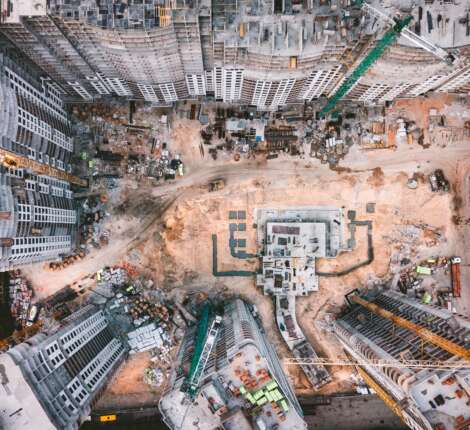Building Construction – Foundation Types
Without a solid and proper foundation, no building would be able to stay upright for very long. The type of foundation used in building construction depends on many factors such as the terrain, the size of the building, its purpose and presence of water runoff in the vicinity.
In general, there are two key types of foundations: shallow foundation and deep foundation. In general, there are two key types of foundations: shallow foundation and deep foundation. Jim Oursler from Granite Foundation Repair in Dallas (https://www.granitefoundationrepair.com) talked about both in detail in this article. Additional details are provided below:
SHALLOW FOUNDATION

A shallow foundation is used when the soil layer at a shallow depth of up to 1.5m can support a structural load. Shallow foundations can be used in depths as shallow as 3 feet. Shallow foundations are also known as open footings or spread footings.
There are four sub-types of shallow foundation:
COMBINED FOOTING
This used when there are two or more columns, and the individual footings are too close to one another. The shape of a combined footing is usually a rectangle, and it is best used when the load is carried by multiple columns.
INDIVIDUAL FOOTING

This is usually constructed for a single column. This is also the most common type of foundation used for the majority of small building constructions. The shape of the individual footing may vary from a rectangle to a square. This type of foundation is used when the load is carried by the columns. The size depends on the safe bearing ability of the terrain and the load on the column.
MAT FOUNDATION
This is also known as a raft foundation. This is used when there is a need to support heavy structural loads from the walls and columns over a wide area. Mat foundation is quite useful when the columns and walls are very tall. Unlike individual footing, mat foundation allows the weight of the structure to spread evenly.
This type of foundation is recommended when the terrain soil doesn’t have great bearing capacity for individual footing. It is relatively cost-effective when at least 50% of the structure is already covered with individual footings, and the wall footings are already in place. Again this type of foundation is not recommended when the groundwater table is above the soil bearing surface, as it can lead to a weakening of the primary structure.
STRIP FOUNDATION
Strip footings, also referred to as spread footings usually have a wide base which allows the dispersion of weight from the building over a wider area, thus providing more stability. Spread footing is usually used for individual walls, columns or bridge piers where the bearing soil layer is within 10 feet from the ground surface. It is vital that the soil bearing capacity is adequate to support the structure weight. This type of foundation is not recommended when there is a potential for ground flow of water over the soil bearing area, which can lead to a weakening of the base.
DEEP FOUNDATION

Deep foundation is used to carry loads from a structure through weak soils or fills to stronger soils or rocks at depth. Deep foundations can be made at depths of 60 to 200 feet.
There are six subtypes of deep foundation, listed below:
BASEMENT FOUNDATION
This is a type of foundation with a hollow substructure that provides working or storage space below ground level.
HOLLOW BOX FOUNDATION
These foundations are designed to provide a structure beneath which the loading on the soil is of low intensity.
CAISSONS FOUNDATIONS
They are designed on or near the surface and then are sunk as a single unit to the desired level.
CYLINDERS
Cylinders are small single-cell caissons constructed on the same principle as caissons foundations.

PILE FOUNDATION
This is used when you want to permit extreme weights over the structure to a hard rocky strata located much deeper in the ground. This type of foundation is chosen when mat or spread foundations do not seem feasible. Pile foundation helps prevent uplift of the structure from any lateral force such as that from excessive winds or an earthquake.
In general, pile foundations are utilized when the terrain near the ground surface is not ideal for heavy loads. In addition, the depth of the hard rock strata should be between 15-50 feet deep from the surface.
DRILLED SHAFT
Drilled shafts are also referred to as Caisson Foundation, is a unique type of deep foundation which is similar to the pile foundation. But a drilled shaft has a much higher capacity cast in-situ. This foundation is able to resist heavy loads through toe resistance and/or shaft resistance.
A heavy duty auger is necessary to construct a drilled shaft. Ideally, a drilled shaft is used when the depth of the hard rock strate is located within 25-100 feet of the ground level. This foundation should not be used in the presence of terrain that has soft clay or loose granular soil. It is also not recommended when the soil cannot be stabilized or when an artesian aquifer exists.
There are many types of building foundations and hopefully this article has proven useful in determining the type of foundation you will need.




